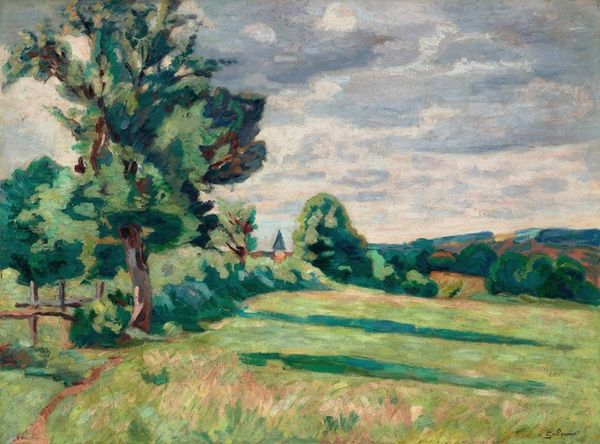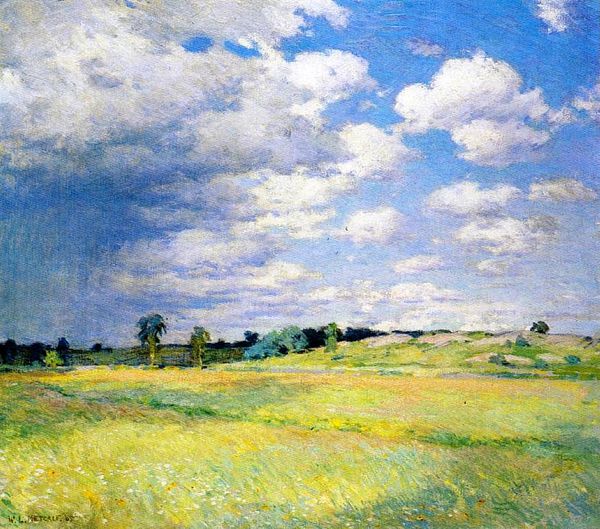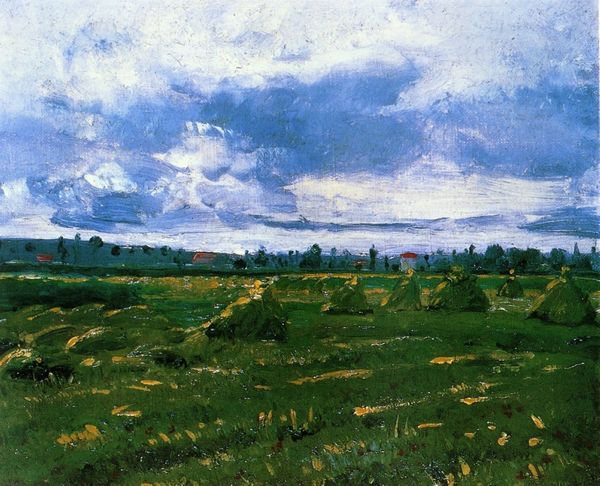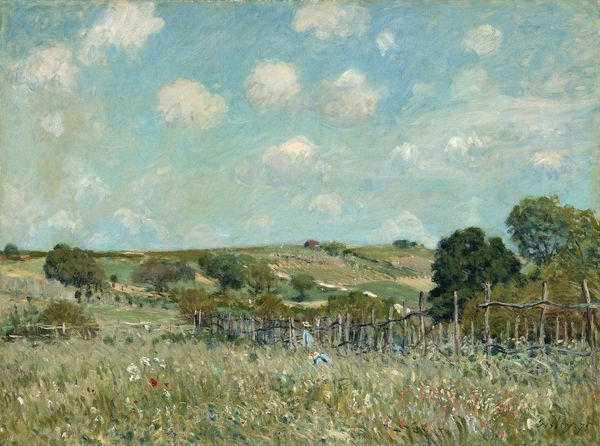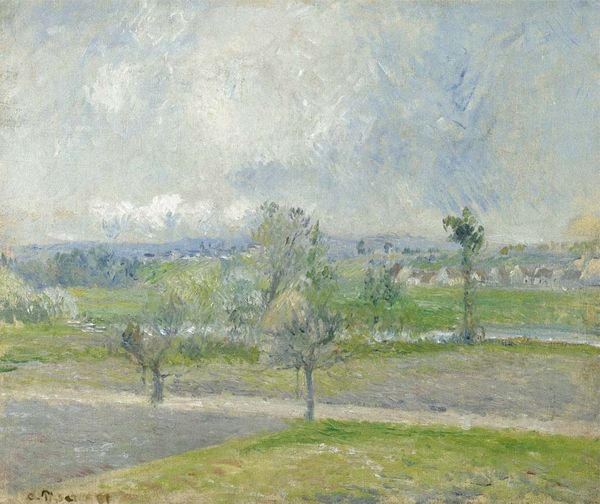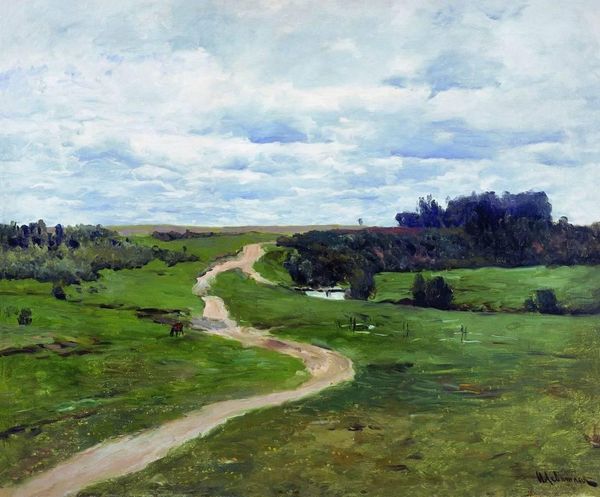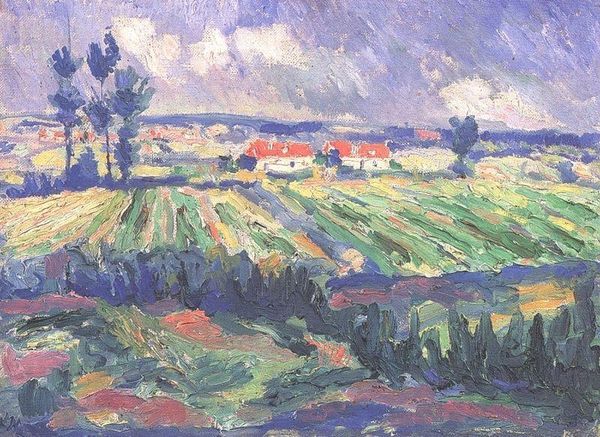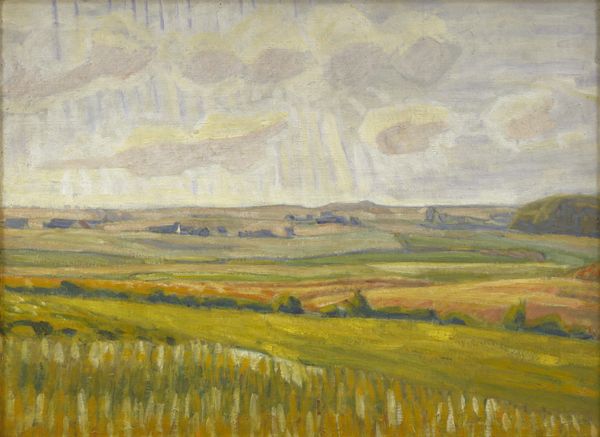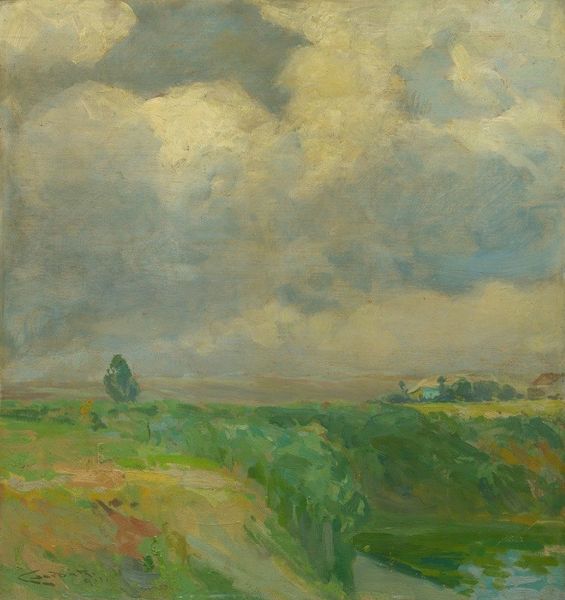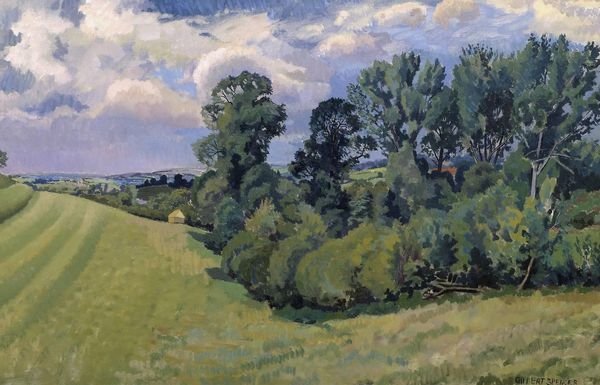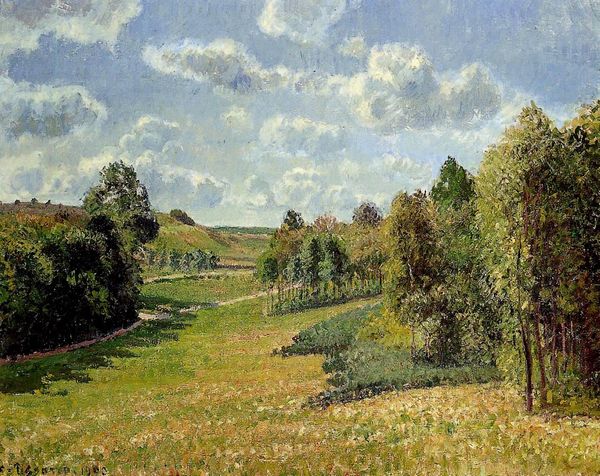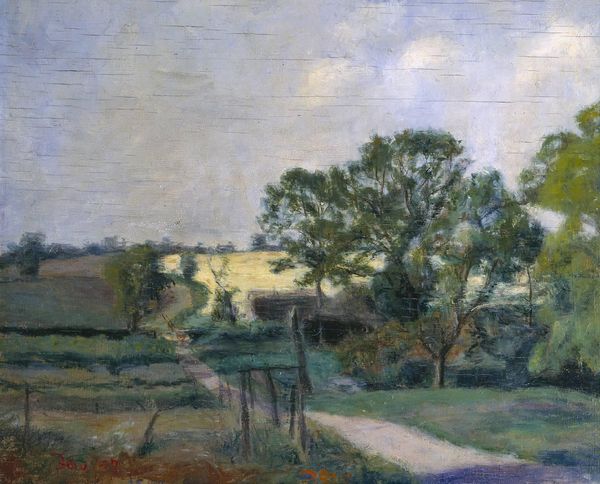
Copyright: Public domain
Curator: Standing before us is Isaac Levitan’s "Stormy Day," painted in 1897. It's currently housed in the Tretyakov Gallery in Moscow. A beautiful example of his landscape work. Editor: My first impression? Quiet drama. It’s not chaotic; the approaching storm is a heavy blanket, about to be dropped. The weight of that sky feels incredibly real. Curator: Absolutely, Levitan had this uncanny ability to capture the mood, the soul, of the Russian landscape. You see elements that recur often in his work—the vast sky, the feeling of melancholy. Editor: Those clouds are just monumental. Almost oppressive. I wonder about their symbolic weight, what they might represent in the Russian psyche at the time? The sense of looming change, perhaps? Curator: That’s an astute point. Remember, late 19th century Russia was a period of intense social and political upheaval. And consider that storms themselves have long symbolized cleansing and transformation in various cultures. This landscape becomes a stage for these internal struggles. Editor: The path in the foreground also fascinates me. Where does it lead? And its strange pale green, somehow unsettling... The colors feel muted and subdued as if holding their breath before the downpour. Is that a kind of foreshadowing? Curator: He uses these subtle cues so effectively. The lack of human presence, too, intensifies the focus on nature itself. It is a common technique. I like how the small wooden houses become dwarfed, as nature assumes supremacy. It is worth noting his commitment to painting "en plein air," capturing the light and atmosphere firsthand. Editor: It almost makes you consider those tiny houses—who shelters inside, what their lives might be like, seen against that elemental backdrop. I can't help reading a broader socio-political symbolism. Do you see any echo to earlier artistic conventions in its compositions? Curator: Absolutely. You could say it's got hints of Romanticism in its grandeur. While Levitan's definitely carving his own path, his work acknowledges what came before. This interplay between raw feeling and formal training is one of the key traits that distinguishes many paintings created at this time. Editor: Considering our present era, constantly shadowed by weather patterns and climate change, I’m newly drawn to how Levitan presents nature—as both beautiful and foreboding, nurturing but with the capacity for monumental force. Curator: A final observation might be that it makes you mindful of nature's constant presence and humanity's small position in its vast tapestry. Editor: Yes, its emotional tenor feels extremely contemporary, perhaps even more so than it did 125 years ago.
Comments
No comments
Be the first to comment and join the conversation on the ultimate creative platform.
